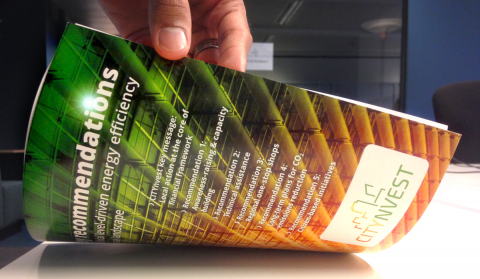
Did you know: buildings are responsible for 40% of energy consumption and 36% of CO2 emissions? Local governments therefore have a great responsibility to make their public buildings more energy efficient. However, they do not always have the resources to do so.
It doesn’t have to be this way: CITYnvest, a three-year project that is coming to an end, is unveiling 5 recommendations addressed to decision makers at EU, national and local level to make energy efficiency in public buildings financially possible and more easily accessible to all cities, no matter their size.
The findings were presented as a final report to the participants of CITYnvest’s final conference, “The power of innovative financing", from 4 to 5 December. Over a hundred local leaders, experts as well as MEPs Claude Turmes and Benedek Javor came together to find solutions for an energy efficient future.
The twelve-page report is full of advice and ideas on how to go about improving access to finance at local level. It is available in English and French. Also available here in Bulgarian, Dutch, German, Hungarian, Italian, Latvian, Lithuanian, Romanian and Spanish. Here is a summary of the recommendations:
To EU leaders | Raise awareness to accelerate take-up of existing funds
Public funds for energy efficiency projects can be of great value to local governments. However, there is too little awareness or understanding of the financial support the EU can provide. More resources should therefore be made available to develop capacity-building and awareness-raising programmes. These resources should also be directed towards supporting a standardised interpretation of EU funding, avoiding different interpretations at local level.
To EU Leaders | Make technical assistance accessible for all
Launching innovative financing schemes often requires an increase in local governments’ expertise, in order to carry out in-depth studies to apply for grants, for instance. This is very challenging for smaller municipalities, and therefore excludes them from the system. One effective way to get around this problem would be to create small-scale technical assistance facilities to guide smaller towns in their work.
To national leaders | Invest in regional one-stop shops
When there are different energy efficiency projects in one region, it makes sense to have a regional coordinating body to connect the different local governments to the financial market. However, setting up such a structure requires financial resources. At national level, states should fix this by allocating more resources and best practice databases to set up regional one-stop shops.
To national and local leaders | Commit to clear plans to cut CO2 emissions
Having a long-term strategy is essential when renovating the building stock, as well as a consistent carbon emission reduction policy. In fact, a lack of long-term plans and clear, consistent political commitment can strongly discourage private investors from financing projects with longer return on investment periods (typically, energy projects). A proven commitment to cutting carbon emissions is therefore essential. At the local level, joining initiatives such as the Covenant of Mayors formalises such a commitment.
To local leaders | Create the ideal environment for citizen-based initiatives
Renewable Energy Cooperatives (REScoops) are instruments that finance energy efficiency projects via direct citizen contribution. With the lack of a regulatory framework, REScoops are not sufficiently encouraged by local governments. Towns and cities should improve their collaboration with REScoops, as they bring both financial and social benefits through active citizen participation.
The booklet is available in other ten languages on this page.


 Print HTML
Print HTML